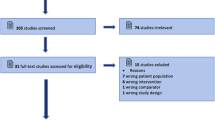Abstract
Background
Meta-analyses show a variable relationship between optic nerve sheath diameter (ONSD) and the presence of raised intracranial pressure (ICP). Because optic nerve sheath (ONS) tissue can be deformed, it is possible that ONSD reflects not only the current ICP but also prior deforming biomechanical exposures. In this post hoc analysis of two published data sets, we characterize ONS Young’s modulus (E, mechanical stress per unit of strain) and calculate threshold pressure for plastic deformation.
Methods
The authors of two previously published articles contributed primary data for these unique post hoc analyses. Human cadaveric ex vivo measurements of ONSD (n = 10) and luminal distending pressure (range 5 to 65 mm Hg) were used to calculate E and the threshold pressure for plastic deformation. Clinical in vivo measurements of ONSD and ICP during endotracheal tube suction from patients with traumatic brain injury (n = 15) were used to validate the ex vivo cadaveric findings.
Results
Ex vivo ONS estimate of E was 140 ± 1.3 mm Hg (mean ± standard error), with evidence of plastic deformation occurring with distending pressure at 45 mm Hg. Similar E (71 ± 10 mm Hg) was estimated in vivo with an average ICP of 34 ± 2 mm Hg.
Conclusions
Ex vivo, ONS plastic deformation occurs at levels of pressure commonly seen in patients with raised ICP, leading to distortion of the ICP–ONSD relationship. This evidence of plastic deformation may illustrate why meta-analyses fail to identify a single threshold in ONSD associated with the presence of raised ICP. Future studies characterizing time-dependent viscous characteristics of the ONS will help determine the time course of ONS tissue biomechanical behavior.


Similar content being viewed by others
Data Availability
The data sets used and/or analyzed during the current study are available from the corresponding author on reasonable request.
References
Fernando SM, Tran A, Cheng W, et al. Diagnosis of elevated intracranial pressure in critically ill adults: systematic review and meta-analysis. BMJ. 2019;366:l4225.
Koziarz A, Sne N, Kegel F, et al. Bedside optic nerve ultrasonography for diagnosing increased intracranial pressure: a systematic review and meta-analysis. Ann Intern Med. 2019;171(12):896–905.
Robba C, Santori G, Czosnyka M, et al. Optic nerve sheath diameter measured sonographically as non-invasive estimator of intracranial pressure: a systematic review and meta-analysis. Intensive Care Med. 2018;44(8):1284–94.
Hansen HC, Helmke K. The subarachnoid space surrounding the optic nerves. An ultrasound study of the optic nerve sheath. Surg Radiol Anat. 1996;18(4):323–8.
Dubourg J, Javouhey E, Geeraerts T, Messerer M, Kassai B. Ultrasonography of optic nerve sheath diameter for detection of raised intracranial pressure: a systematic review and meta-analysis. Intensive Care Med. 2011;37(7):1059–68.
Vaiman M, Gottlieb P, Bekerman I. Quantitative relations between the eyeball, the optic nerve, and the optic canal important for intracranial pressure monitoring. Head Face Med. 2014;10:32.
Hansen HC, Lagrèze W, Krueger O, Helmke K. Dependence of the optic nerve sheath diameter on acutely applied subarachnoidal pressure - an experimental ultrasound study. Acta Ophthalmol. 2011;89(6):e528–32.
Maissan IM, Dirven PJ, Haitsma IK, Hoeks SE, Gommers D, Stolker RJ. Ultrasonographic measured optic nerve sheath diameter as an accurate and quick monitor for changes in intracranial pressure. J Neurosurg. 2015;123(3):743–7.
Shin A, Yoo L, Park J, Demer JL. Finite element biomechanics of optic nerve sheath traction in adduction. J Biomech Eng. 2017;139(10):101010.
Shin A, Park J, Le A, Poukens V, Demer JL. Bilaminar mechanics of the human optic nerve sheath. Curr Eye Res. 2020;45(7):854–63.
Hua Y, Voorhees AP, Sigal IA. Cerebrospinal fluid pressure: revisiting factors influencing optic nerve head biomechanics. Invest Ophthalmol Vis Sci. 2018;59(1):154–65.
Carew EO, Patel J, Garg A, Houghtaling P, Blackstone E, Vesely I. Effect of specimen size and aspect ratio on the tensile properties of porcine aortic valve tissues. Ann Biomed Eng. 2003;31(5):526–35.
East L, Lyon M, Agrawal P, et al. Increased intracranial pressure damages optic nerve structural support. J Neurotrauma. 2019;36(22):3132–7.
Forouzandeh F, Bozorgi MH, Meshkat B, Fatouraee N. Measurement of mechanical properties of human saphenous vein using an inflation experiment. Paper presented at the Iranian Conference of Biomedical Engineering, Tehran, Iran, 18–20 December 2013.
MacLean NF, Dudek NL, Roach MR. The role of radial elastic properties in the development of aortic dissections. J Vasc Surg. 1999;29(4):703–10.
Author information
Authors and Affiliations
Contributions
RCT conceived the study. KH, HCH, IMM, and RJS were authors of the previously published data. ML, AAA, and RCT performed the statistical analysis of the data set and wrote the original manuscript. All authors read and approved the final manuscript.
Corresponding author
Ethics declarations
Conflicts of interest
The authors declare that they have no competing interests.
Ethical Approval/Informed Consent
Post hoc analysis of previously published data. RCT contacted the authors of the two primary reports and gained approval for the analyses as well as co-opting the main authors as collaborators in this article.
Additional information
Publisher's Note
Springer Nature remains neutral with regard to jurisdictional claims in published maps and institutional affiliations.
Rights and permissions
About this article
Cite this article
Luchette, M., Helmke, K., Maissan, I.M. et al. Optic Nerve Sheath Viscoelastic Properties: Re-Examination of Biomechanical Behavior and Clinical Implications. Neurocrit Care 37, 184–189 (2022). https://doi.org/10.1007/s12028-022-01462-x
Received:
Accepted:
Published:
Issue Date:
DOI: https://doi.org/10.1007/s12028-022-01462-x




